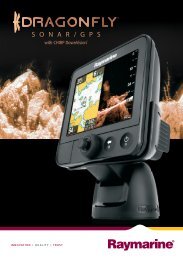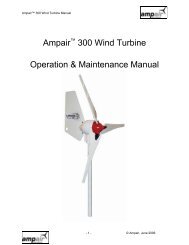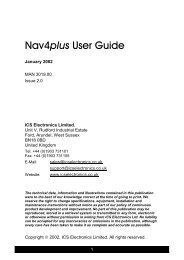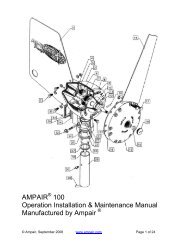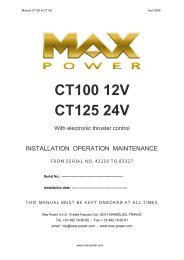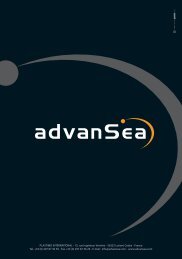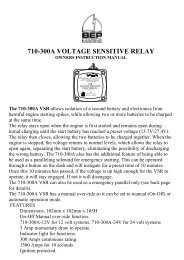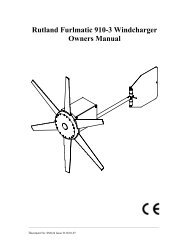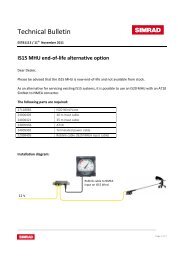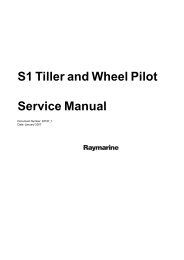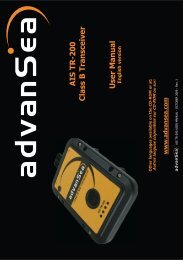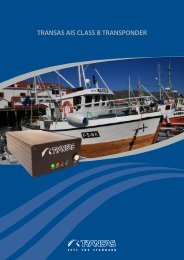User manual - JG Technologies
User manual - JG Technologies
User manual - JG Technologies
You also want an ePaper? Increase the reach of your titles
YUMPU automatically turns print PDFs into web optimized ePapers that Google loves.
13.1 AIS overview<br />
The AIS feature enables you to receive information broadcast by<br />
other vessels, and to add these vessels as targets in the chart and<br />
radar applications.<br />
With an optional AIS unit connected to your system you can:<br />
• Display targets for any other AIS-equipped vessels.<br />
• Display voyage information being broadcast by these targets,<br />
such as their position, course, speed and rate-of-turn.<br />
• Display basic or detailed information for each target vessel,<br />
including safety-critical target data.<br />
• Set up a safe zone around your vessel.<br />
• View AIS alarm and safety-related messages.<br />
• Add AIS-equipped friends and regular contacts to a “Buddy List”<br />
AIS information is displayed in the form of an overlay in the chart<br />
and radar applications. Additional data is displayed in a dialog<br />
box, for example:<br />
AIS Simulator Mode<br />
Raymarine recommends that you use the simulator function to<br />
familiarize yourself with the AIS features. When the simulator<br />
function is enabled (homescreen > Set-up > System Settings ><br />
Simulator), it displays 20 AIS targets within a 25 nm range. These<br />
targets are displayed using the appropriate AIS target’s status<br />
symbol, and move around the screen as if they were real targets.<br />
Note: Incoming safety messages are NOT displayed while the<br />
simulator is enabled.<br />
1 2 3 4 5 6 7<br />
097°T<br />
11.6kt<br />
1.237nm<br />
00h04m33s<br />
D12220-1<br />
Item<br />
Description<br />
1 Dangerous target (flashes).<br />
2 Safe zone (defined by distance and /<br />
or time).<br />
3 AIS target vessel.<br />
4 Heading.<br />
5 Direction of turn.<br />
6 COG/SOG vector.<br />
7 Safety critical data.<br />
AIS-equipped vessels in the surrounding area are displayed in the<br />
chart or radar application as triangular targets. Up to 100 targets<br />
are displayed. As the vessel’s status changes, the symbol for the<br />
target changes accordingly.<br />
Vectors can be displayed for each target. These vectors indicate<br />
the vessels direction of travel and the distance it will travel over a<br />
specified period of time (COG / SOG vector). Targets displayed<br />
with their vectors are referred to as ‘active targets’ and are scaled<br />
according to the size of the vessel. The larger the vessel, the larger<br />
the target. You can either display all targets or just dangerous<br />
targets.<br />
How AIS Works<br />
AIS uses digital radio signals to broadcast ‘real-time’ information<br />
between vessels and shore-based stations via dedicated VHF radio<br />
frequencies. This information is used to identify and track vessels in<br />
the surrounding area and to provide fast, automatic and accurate<br />
collision avoidance data. The AIS features complement the radar<br />
application, as AIS can operate in radar blind spots and can detect<br />
smaller vessels equipped with AIS.<br />
Note: It may not be mandatory for vessels to be fitted with<br />
operational AIS equipment. Therefore, you should not assume<br />
that your multifunction display will show ALL vessels in your area.<br />
Due prudence and judgement should be exercised. AIS should<br />
be used to complement radar, NOT substitute it.<br />
148 e7 / e7D / e95 / e97 / e125 / e127 / c95 / c97 / c125 / c127




